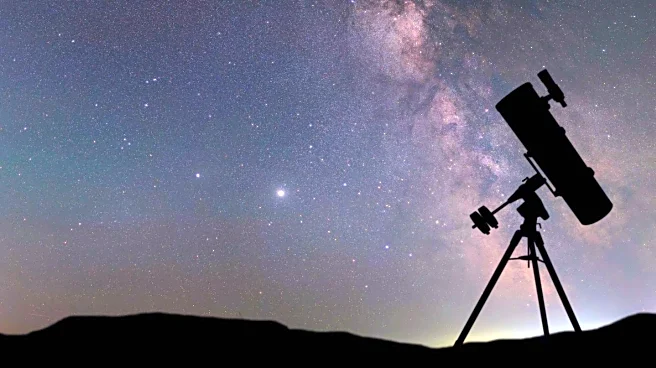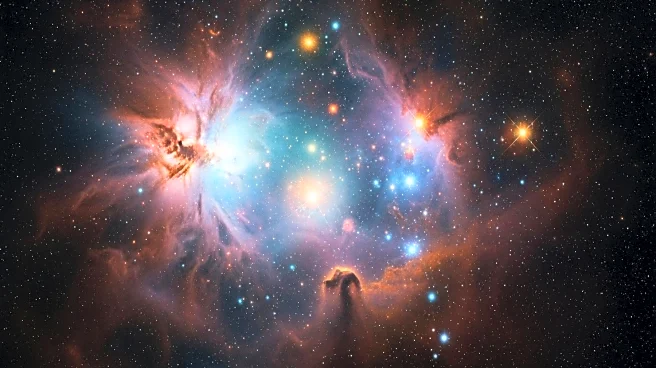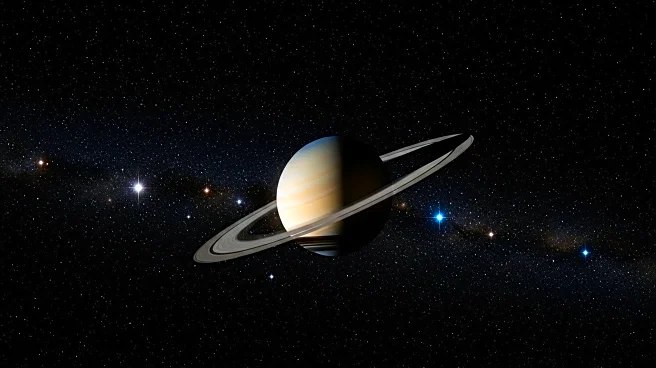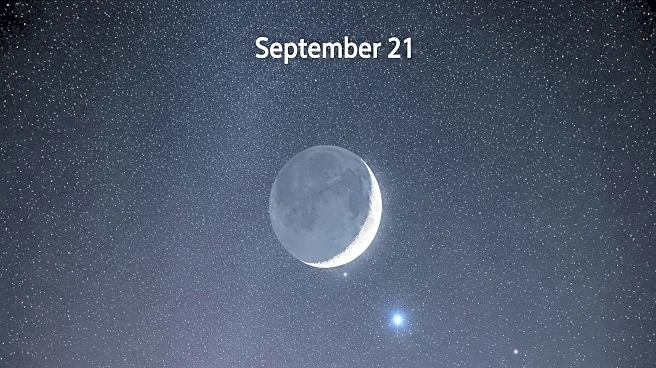What is the story about?
What's Happening?
As the colder months approach, the opportunity to view the Milky Way's center is diminishing. The Milky Way, a spiral galaxy containing billions of stars, is most visible during the warmer months. In Oklahoma, stargazers have a limited time left to witness this cosmic spectacle without the need for telescopes, provided they find a location with minimal light pollution. Southern states, including Oklahoma, are expected to have better visibility of the Milky Way further into the year due to their proximity to the equator. The Milky Way season typically runs from February to October, with the best viewing times in the Northern Hemisphere from March to September. As September progresses, the Milky Way remains visible, albeit harder to spot, with optimal viewing conditions during the new moon phase starting September 21.
Why It's Important?
The visibility of the Milky Way offers a unique opportunity for stargazers and astrophotographers to capture the galaxy's beauty. This event highlights the importance of preserving dark sky areas, which are crucial for astronomical observations. The extended visibility in southern states like Oklahoma underscores the geographical advantages these regions have for stargazing. It also emphasizes the need for awareness about light pollution, which can hinder the ability to observe celestial phenomena. The Milky Way's visibility can inspire interest in astronomy and science, encouraging educational activities and tourism related to stargazing.
What's Next?
As the Milky Way season comes to an end, stargazers in Oklahoma and other southern states will continue to have opportunities to view the galaxy, especially during the new moon phase. Efforts to preserve dark sky areas may gain momentum, promoting initiatives to reduce light pollution. Stargazing events and educational programs could be organized to capitalize on the remaining visibility of the Milky Way. Additionally, advancements in astrophotography techniques may allow enthusiasts to capture the galaxy's beauty even as visibility decreases.
Beyond the Headlines
The extended visibility of the Milky Way in southern states like Oklahoma may lead to increased interest in astronomy and science education. This could foster a greater appreciation for the natural world and the universe, encouraging more people to engage in stargazing and related activities. The event also highlights the cultural significance of the Milky Way, which has been a source of inspiration and wonder throughout human history. As awareness of light pollution grows, there may be a push for more sustainable lighting practices to preserve the night sky for future generations.
AI Generated Content
Do you find this article useful?














